Sump Pump Running But Not Pumping? Explained
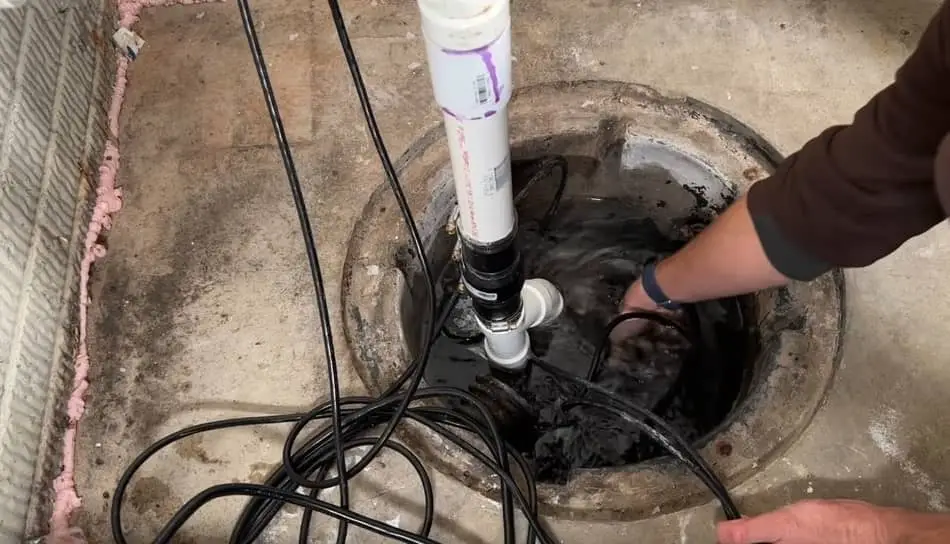
A sump pump is an important device that every basement needs to have. Without it, the basement would be exposed to flooding. However, these devices do not last forever, and like any device, they break down and cause problems. But what if your sump pump is working but the water in the sump pit is still there? In this article, we’ll talk about the most common reasons why these pumps break down and how to fix them. So let’s go!
So Why is Sump Pump Running But Not Pumping? There can be a few reasons why the sump pump will run but not pump. Some of the most common issues why this happens are a broken impeller, clogged lines, blocked float, or simply a failure of the entire system. In any case, there are methods you can use to solve this problem.
When this problem occurs, the first thing you should do is to remove the water from the sump pit. When you notice that the water level in the sump pit has risen and the pump is not doing its job, take a bucket and get to work. You need to remove most of the accumulated water before doing anything else.
If If you have an unusual hole in your basement, be sure to read Why Is There a Hole In My Basement Floor?
How to Tell That Sump Pump is Not Pumping?
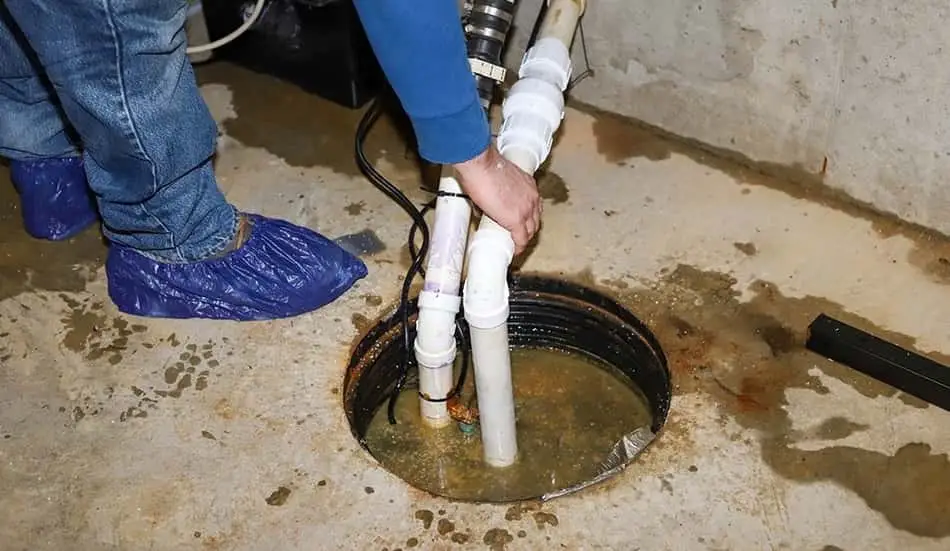
The first step is to check whether the pump is pumping water as it should. Fill the sump pit with water to the level where the float activates and starts the motor. After the motor starts, check if the water is coming out through the discharge pipe. You will know that the pump does not work if you hear the sound of the running motor, but you do not see any draining. Now that you’ve determined that, we can move on to the next step.
Inspect That your Sump Pump Is Not Clogged
First, you need to go outside and check the discharge pipe. Depending on the location, there may be accumulated leaves, dirt, and debris that prevent water from leaving the system. You can try to remove the dirt that blocks the pipe by hand. However, if the pipe is clogged badly, you can use a clothes hanger. Most clogged can be easily pulled out from the pipe with the hanger hook.
If you have examined everything and found that it is not a blockage that is causing the sump pump not to pump, then the problem is inside. Make sure to turn off the power supply to the pump by switching the breaker and unplugging the device.
Note! For your own safety, do not inspect the device if you have not turned off the power!
Using a flashlight, inspect the small hole at the bottom of the pump through which water normally enters the system or inlet screen. Keep in mind that there is a possibility that even with the help of a flashlight, you will not be able to inspect the pump well and that it will be necessary to remove it from the discharge pipe and pull it out into daylight.
We recommend that you wear gloves and only then start removing muck or debris that you find to interfere with the inlet. Remove all dirt and sludge you come across, and then wipe the area well with a cloth. We advise you to clean the entire device from all sides when you have already taken the trouble to remove it from its housing.
With the help of a shop vac, you need to lean against the end of the discharge pipe, check for clogs in the central part of the pipe that you cannot see, and remove them. To make sure that the pipe is completely cleaned, ask another person to test the pressure at the other end of the pipe while using the shop vac.
Once you are sure the pump is well-cleaned, return it to the sump pit. Slowly place it in the pit center and reconnect the discharge pipe. Now you can turn on the power again. Fill the basin with water to the level where the float activates and start the motor. If at this point, the pump starts to drain the water as it should – congratulations, your problem is solved!
Problem With a Broken Impeller
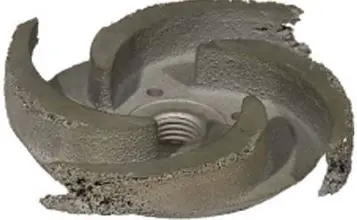
After checking the entire system and not encountering blockages that prevent the operation of the pump, the cause of your problem lies elsewhere. It is usually a broken impeller. The impeller is usually located inside the sump pump, at the location where a screen is placed. It is placed there to block the debris so they can’t get to the impeller and clog it.
If the impeller does not rotate, it means that sludge and dirt have accumulated on it over time. Also, there is a possibility that the impeller has moved from the position where it should be fixed or that it is mechanically damaged. If that is the case, you can recognize that the device cannot suck water.
How to Replace The Impeller?
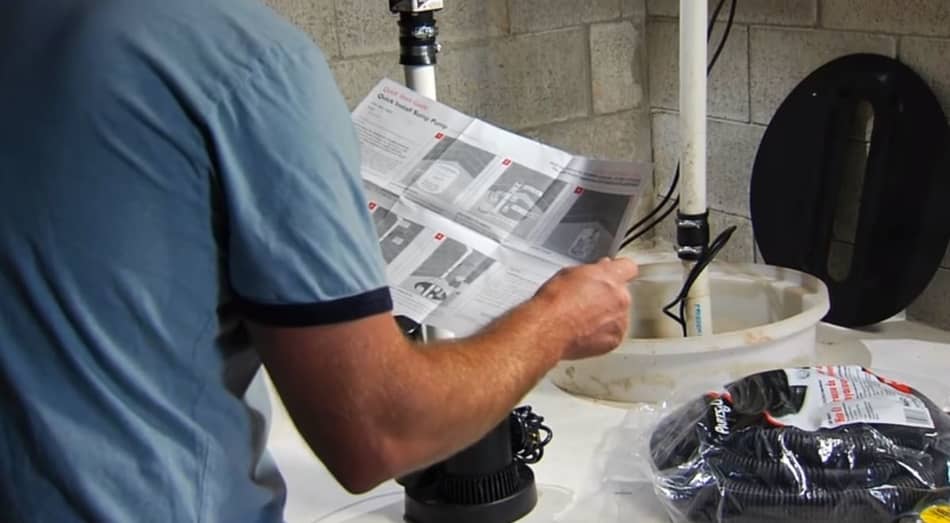
- Turn off or unplug the breaker that controls the work of the sump pump. Also, make sure that the discharge pipe is disconnected.
- The sump pump must be removed from the pit. To reach the impeller, depending of sump pump model, you will possibly have to take off the bottom casing.
- Check if the impeller has any visual damage. If so, replace it. Clean all sides of the impeller with the rag.
- If the impeller is not in its place, try to put it back on. When you put the impeller back on (also works for new pipes), place it on the spot but do not press it all the way. Then quickly spin it to get it tight. The threads are usually reverse threaded. This means that while the sump pump is on the go, the impeller will tighten by itself.
- Put back the bottom cover and place the pump leveled and flat in the sump pit. Next, you must do the same with the discharge pipe.
- Make sure to plug in the device, and turn on the breaker. Pure in the clean water in the sump pit until the rising of the float on the right level turns on the motor. If the impeller was the problem, the water should be getting out now.
If you have checked everything and concluded that there is no problem with the impeller and that there is no blockage in the system, it is probably time to buy a new sump pump.
Monitor Your Sump Pump By Using Sensors
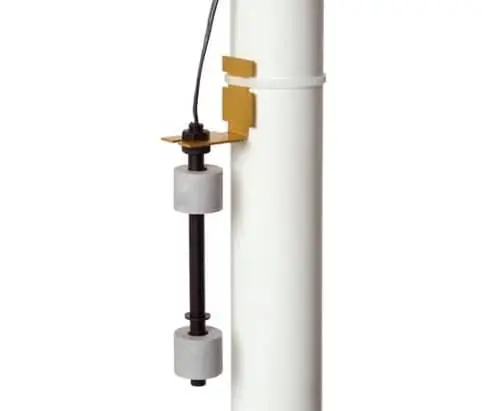
Unfortunately, most homeowners can’t tell that their sump pump has stopped working until it’s too late. This is because it is impossible to notice that the sump pump isn’t working by just looking at it.
Also, it is common for the sump pump to stop working in the middle of the night or while you are at the work. If that happens, your basement can be filled with water without anyone being aware of it. However, you can buy devices that can monitor your sump pump operation instead of the homeowner. This device plugs into an outlet directly. It has an attached sensor that is placed right next to the float switch.
When in the sump pit the water level reaches the sensor, this device will start beeping and will send you an email or text notification through your home Wi-Fi network, notifying you about the problem. This Wi-Fi Monitor Senor can be bought from its manufacturer.
What Is The Lifespan Of a Sump Pump?
Sump pumps usually last on average 10 years. But if you do the regular maintenance of this device, you could extend its lifespan by an additional five or even ten years! When it comes time to buy a new sump pump, there is no reason to worry since it is not a serious investment. Sump pumps can be purchased in the price range between $70 and $300. The price of the device depends on the type and the model.
Does Sump Pump Require Maintenance?
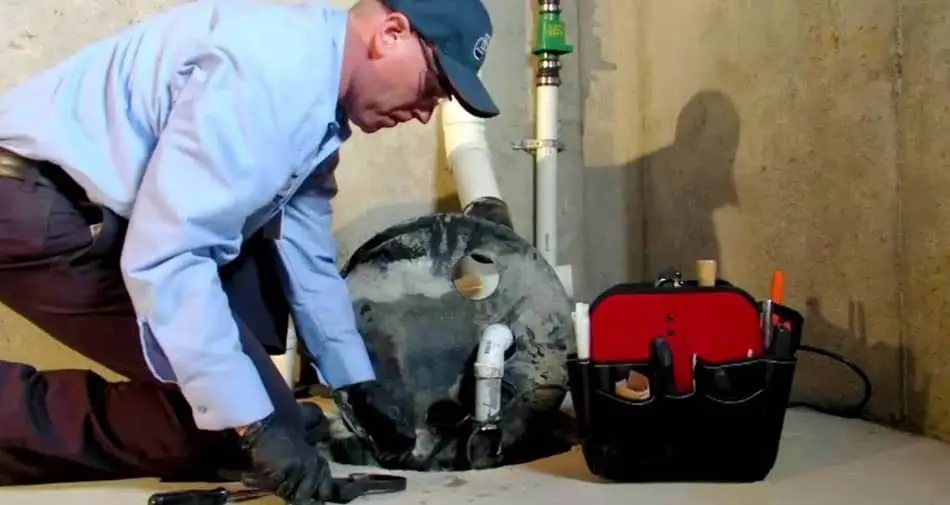
Sump pumps are devices that don’t require special maintenance to work properly. It is recommended to remove the pump from the sump pit once a year, clean it well and check that it is in good condition. If your sump pump is frequently used due to the climatic conditions of the area where you live, it is recommended to inspect the device in this way more often, every six to nine months.
Sump Pump Maintenance
When it comes to maintenance, be sure to do it in the following way:
- Turn Off the Power – Turn off or unplug the breaker to cut off the sump pump from the electric grid.
- Disconnect Discharge Pipe – The discharge pipe also must be disconnected. Then pull the pump out from the pit and place it on the floor. We recommend using gloves for this task.
- Remove Check Valve – If the device has a check valve, inspect it to be sure that it is moving and working as it is supposed to. Also, check for dirt and clogs.
- Wipe Down and Clean – The sump pump should be wiped down with a rag to remove any sludge and dirt. Also, you must clean the inlet screen of any debris. Tip, this garden hose, can be used.
- Use Owners Manual – Read the owner’s manual or online information that you can find about the sump pump model that you own to find out does your device have parts that need to be oiled or greased.
- Clean Sump Pit – Inspect the sump pit to make sure it is clean of things that do not belong in it. Like old shoe, or a toy. Clean the bottom and walls of the device from the buildup of sludgy slim.
- Connect Discharge Pipe – Put back on the check valve, and then place the pump back in its place in the pit. Make sure that the pump is level and flat. Then the discharge pipe should be reconnected.
- Turn On the Power – Check the power cable to make sure it does not have cracks or other signs of damage. After, you need to plug the pump into the grid and turn the breaker on to power it up.
- Test the Sump Pump– Check if the device is working as it should by purring the clean water into the pit to the level on which the float turns on the motor.
For more, be sure to watch this Youtube video:
If you have a moisture problem in your basement, be sure to read How to Keep Basement Dry Without Dehumidifier?
FAQ: People Also Ask
Should a sump pump have standing water in it?
Yes, the water should be in the sump pit, but its level should not be very high. Normal water levels are between two to three inches looking from the bottom. If there is more water in your sump pit than the amount mentioned, you can conclude that you have a problem.
Should you replace the sump pump if you have moved into a new house?
No matter what the previous homeowner has told you, you must always see for yourself that your sump pump is in good condition. You need to get information on exactly which pump model you have and check the valve and discharge lines. It is also important to make sure your sump pit is the right size.
Can you prevent dirt from getting into the sump pump?
You can do this effectively by placing a lining of fiberglass in the sump pit or by installing the discharge line at a slightly higher position to prevent dirt from accumulating.
Final Thoughts
If you are well acquainted with the operation of your sump pump, you should have no difficulty if the device becomes clogged. You should be able to solve the problem by yourself, without calling for professional help. Keep in mind that you can avoid this problem if you maintain the device regularly and use the methods we mentioned in this article.
But you also need to know that the sump pump has its own lifespan and that the situation will arise that you have to buy a new one. Our advice is to try to repair a sump pump that has difficulties in operation first, but if you fail to do so, simply buy a new one.
